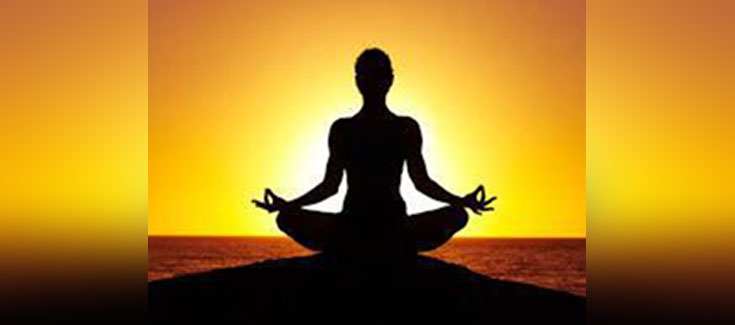Yoga May Be the Answer

Originally Posted on June 15, 2018
The earliest Yogic texts and mantras are thought to date back anywhere from 2,500-5,000 years ago. With the translation of “to yolk,” meaning “to link” or “to connect.” Yoga offers guidance for how individuals can interact with themselves, others, and their environment. It wasn’t until around the 14th century when it is believed that yoga Asanas or “postures” first appearance in texts. Asana practice first made its way into Western culture in the mid-19th century and then had a couple of big booms in the mid and late 20thcentury. Today yoga is firmly planted in mainstream culture, its current popularity in the U.S. and around the world is at an all-time high.
Speaking of the world nowadays, you may have noticed that it’s gotten pretty crazy out there. It is a world flooded with countless technological advances, many of which require us to move as little of our bodies as ever before. It is a world that can be quite stressful, from the morning commute to what is on the evening news (or Twitter feed). It is a world that often times requires our attention to be in about ten places at the same time.
The world we live in is incredibly exciting and accessible. However, for the best chance at a long, happy, and healthy life, is important to take the appropriate measures to balance out some of the ill-effects of living in such an advanced time. Yoga can be a great option for checking off several of those self-care boxes at once.
Though there are many variations and styles of practice (see below for a link to a description of the most common styles of Yoga), they all have the potential to share numerous common benefits. Here are some of the potential benefits one can take away from an earnest and consistent asana (yoga) practice:
- Attentiveness and Awareness: One of the fundamental principles of asana practice is remaining attentive to the present moment whether that involves your breath, a movement, or another area of focus. The hope is that this can translate into more awareness and focus in other areas of life. This is also the best way to stay safe and injury-free.
- Improved Mobility (for the stiffer folks): From the perspective of a physical therapist, asana practice does an incredible job of reproducing so much of the available movement in every direction, in every joint in the body.
- Improved Stability/Muscle Control (for the more flexible folks): As a follow up to the previous bullet, yoga asks that you perform these movements with the utmost control without ever forcing the movement. The goal is to use your muscular control instead of using leverage or momentum to compress joints or hang on ligaments. Yoga was not created for flexible people to show off!
- Improved Body Awareness and Posture: The previous two bullet points combine to improve the practitioner’s awareness and control of their body positioning (or posture), whether it’s sitting at a desk or swinging a golf club. Pretty much everyone could use a little bit of this.
- Breath Control: Perhaps one of the most under-recognized benefits of Yoga practice is the positive effect it can have on one’s breath awareness and control. They can be so important for cardiovascular function, respiratory function, stress management, and many other areas of the body. Pranayama is style of Yoga that involves breath work with little to no movement. Additionally, Lyengar style yoga is known for its precision and detail with respect to breath and movement.
- Strength: Many poses in various styles of yoga can be quite helpful for increasing strength of the muscles of the hips, shoulders and core, which can enhance the ability to squat, lunge and bear weight in the upper body
- Balance: Transitioning from pose to pose or static holding of poses that involve a long stance or a single-leg stance all help to develop balance.
- Energizing: Certain styles and poses can have a strong energizing effect, particularly poses involving twisting (mid back rotation) and inversions (handstands, headstands, etc.) Ashtanga and vinyasa flow style classes tend to be more fast-paced and are thought of as energizing.
- Calming or Grounding: Conversely to the previous bullet, many styles can have a more calming and centering effect. The aforementioned pranayama and restorative styles typically have this effect.
An important point to consider about Yoga practice, which has been preached by some of the most influential teachings, is that Yoga should be both universal and personal; every person should have access to Yoga, but each practice should be specific to that person. With that thought in mind, it is important not to push yourself too far or try to do what the person next to you in a class is doing. Remember, you can’t “win” at Yoga, but you certainly can get a whole lot of health benefits!
Please call us if you would like more information and stay tuned for an in house small group classes coming to LPT in the summer!
Written by Abel Romero, PT, DPT
Physical Therapist at LPT
Arranged and Edited by
Zack Krumland, BSBA
Community Outreach Coordinator at LPT
Disclaimer
This article is intended as general health information and is not intended to provide individual specific medical advice, professional diagnosis, opinion, treatment or services to you or any other individual. Please consult your doctor or a medical professional before starting or changing a health, fitness, or nutrition program.

